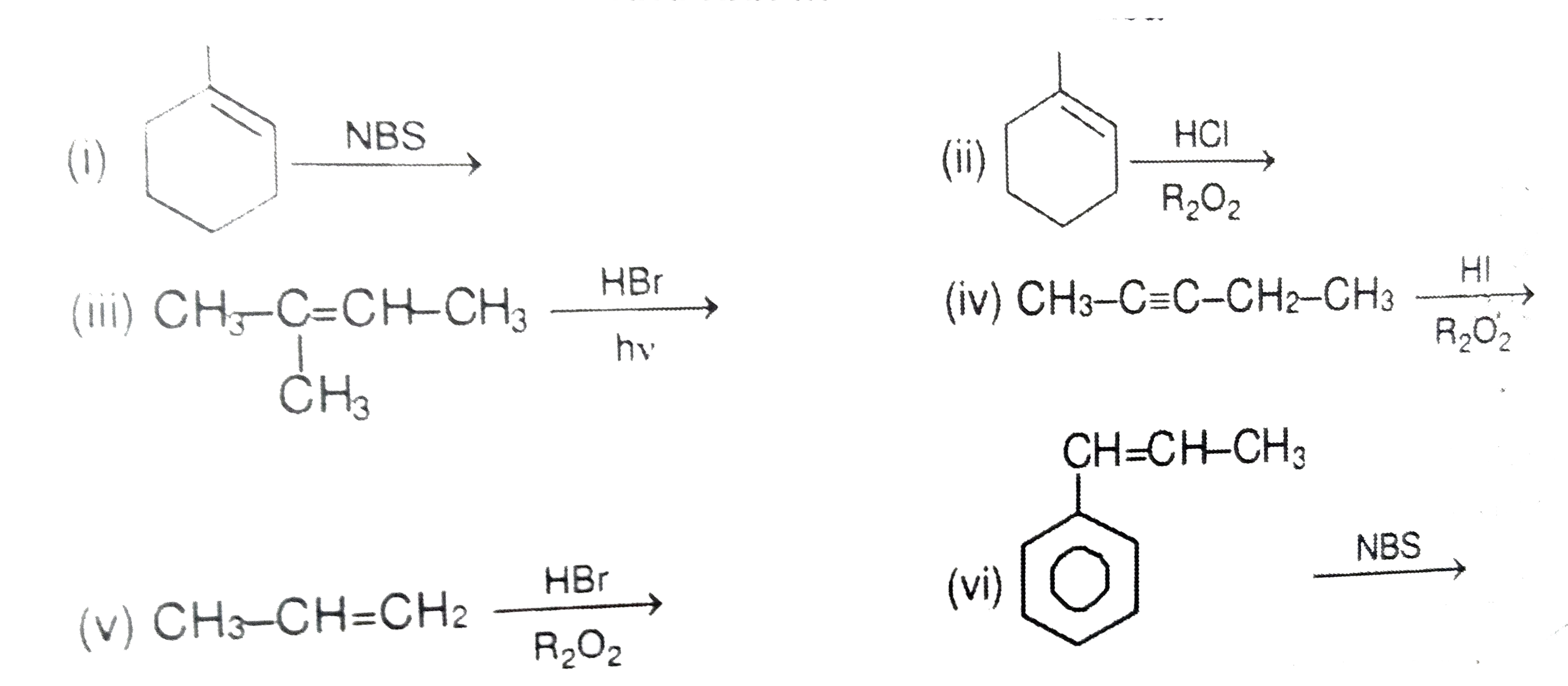A: When butyne-2 is reacted with Na/liq. NH3 then trans-butene-2 is formed.
R : This reaction proceeds through free radical intermediate.
If both Assertion & Reason are true and the reason is the correct explanation of the assertion, then mark (1).
If both Assertion & Reason are true but the reason is not the correct explanation of the assertion, then mark (2)
if Assertion is true statement but Reason is false, then mark (3)
If both Assertion and Reason are false statements, then mark (4)
The correct Answer is:2
To solve the question, we need to analyze the assertion and reasoning provided:
Assertion (A): When butyne-2 is reacted with Na/liquid NH₃, then trans-butene-2 is formed.
Reason (R): This reaction proceeds through a free radical intermediate.
1. Identify the Compound:
- Butyne-2 (also known as 2-butyne) has the structure CH₃C≡CCH₃. It is an alkyne with a triple bond between the second and third carbon atoms.
2. Understand the Reaction Conditions:
- The reaction involves sodium (Na) in liquid ammonia (NH₃). This is a common method for the reduction of alkynes to alkenes.
3. Reaction Mechanism:
- The reaction of 2-butyne with Na/NH₃ leads to the formation of trans-butene-2. This is a reduction reaction where the triple bond is converted to a double bond.
4. Formation of Trans-Butene-2:
- During the reduction process, the alkyne is converted to an alkene. The product formed is trans-butene-2 (CH₃CH=CHCH₃), which is the trans isomer due to the anti-addition of hydrogen atoms across the double bond.
5. Evaluate the Reasoning:
- The reasoning states that the reaction proceeds through a free radical intermediate. However, the reduction of alkynes using sodium in liquid ammonia does not proceed through a free radical mechanism. Instead, it typically involves an electron transfer mechanism leading to the formation of a carbanion intermediate.
6. Conclusion:
- The assertion is true: 2-butyne does form trans-butene-2 when reacted with Na/NH₃. However, the reasoning is false because the reaction does not proceed through a free radical mechanism.
Final Answer:
- Assertion (A) is true, and Reason (R) is false.
Reason (R): This reaction proceeds through a free radical intermediate.
- Butyne-2 (also known as 2-butyne) has the structure CH₃C≡CCH₃. It is an alkyne with a triple bond between the second and third carbon atoms.
- The reaction involves sodium (Na) in liquid ammonia (NH₃). This is a common method for the reduction of alkynes to alkenes.
- The reaction of 2-butyne with Na/NH₃ leads to the formation of trans-butene-2. This is a reduction reaction where the triple bond is converted to a double bond.
- During the reduction process, the alkyne is converted to an alkene. The product formed is trans-butene-2 (CH₃CH=CHCH₃), which is the trans isomer due to the anti-addition of hydrogen atoms across the double bond.
- The reasoning states that the reaction proceeds through a free radical intermediate. However, the reduction of alkynes using sodium in liquid ammonia does not proceed through a free radical mechanism. Instead, it typically involves an electron transfer mechanism leading to the formation of a carbanion intermediate.
- The assertion is true: 2-butyne does form trans-butene-2 when reacted with Na/NH₃. However, the reasoning is false because the reaction does not proceed through a free radical mechanism.
- Assertion (A) is true, and Reason (R) is false.
Topper's Solved these Questions
- HYDROCARBONSBOOK - AAKASH INSTITUTECHAPTER - HYDROCARBONSEXERCISE - Assignment(Section - C) (Previous Years Questions)
69 Videos
- HALOALKANES AND HALOARENES BOOK - AAKASH INSTITUTECHAPTER - HALOALKANES AND HALOARENES EXERCISE - ASSIGNMENT SECTION -D
15 Videos
- HYDROGENBOOK - AAKASH INSTITUTECHAPTER - HYDROGENEXERCISE - ASSIGNMENT (SECTION - D) (Assertion-Reason Type question)
15 Videos
Similar Questions
Knowledge Check
3-Hexyne reacts with Na/liq. NH3 to produce
Acis-3-HexeneBtrans-3-HexeneC3-HexylamineD2-HexylamineWhich of the following reactions are completed through free radical intermediate ?
A(CH3)3CH+Br2hv−−→(CH3)3CBr+HBrB(CH3)3C=CH2+Br2→CH3−Br∣C∣CH3−Br∣CH2CCH3−CH=CH2+Cl2hv−−→C∣ClH2−CH=CH2DPh−CH=CH2+HBrR2O2−−→hvPh−CH2−C∣BrH2
The correct combination in which the reaction proceeds through radical intermediate is/are :A(I)(i)(S)B(II)(ii)(P)C(III)(iii)(Q)D(IV)(iii)(R)
When Na reacts with liquid NH3, the substance formed is
View SolutionWhen Na reacts with liquid NH3 the substance formed initially is
View SolutionA : Propene reacts with HBr in presence of H2O2 gives 2-bromopropane as a major product.
R : This reaction proceeds always through 2∘ free radical as intermediate.
View SolutionAssertion : When acetamide reacts with NaOHandBr2, methyl amine is formed.
Reason : The reaction occurs through intermediate formation of isocyanate.
View SolutionWhen o-bromoanisole is treated with NaNH2/liq.NH3 , the main product obtained is
View Solution

